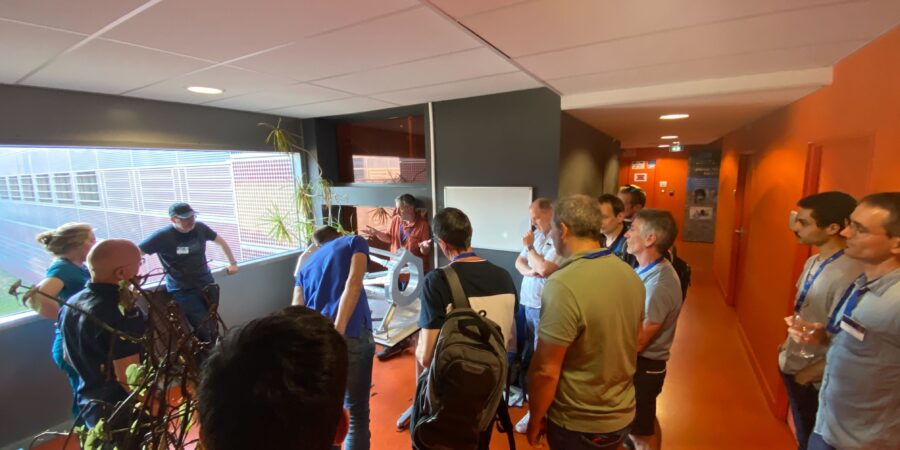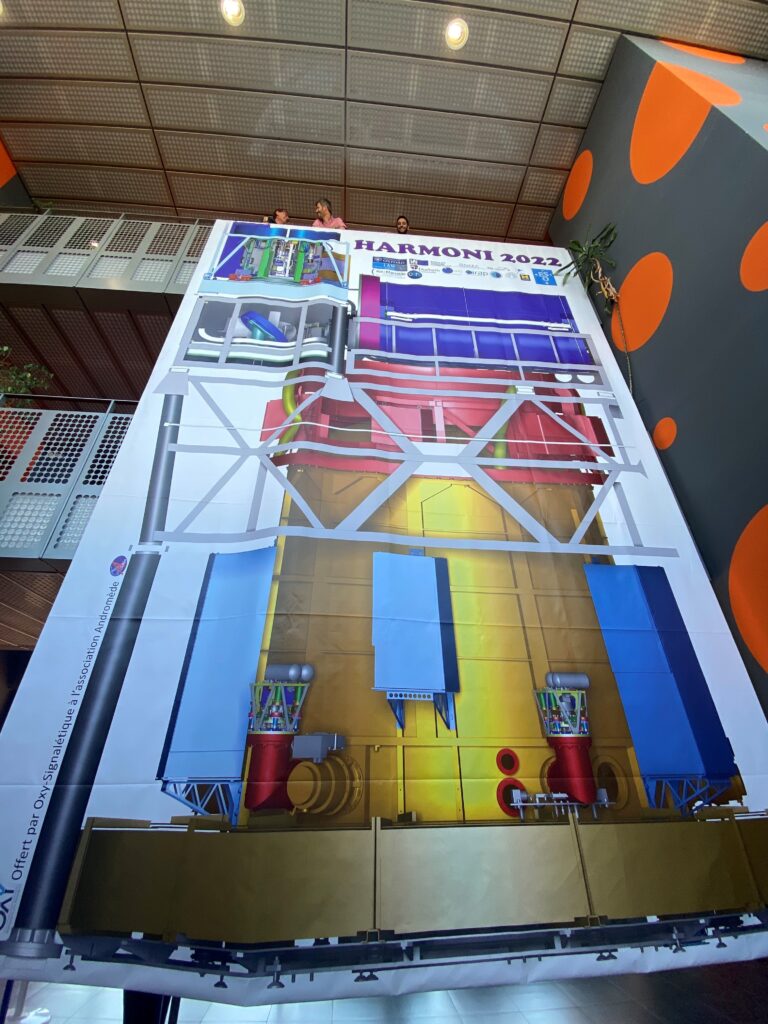
 The Marseille Astrophysics Laboratory (LAM) hosted the annual meeting of the HARMONI consortium. After two years of health restrictions, about 100 people are gathered to work on the progress of the project.
The Marseille Astrophysics Laboratory (LAM) hosted the annual meeting of the HARMONI consortium. After two years of health restrictions, about 100 people are gathered to work on the progress of the project.
Europe, through its agency for ground-based astronomy (ESO), is engaged in the construction of the largest telescope ever built, the ELT (Extremely Large Telescope https://elt.eso.org/ – webcam on the construction site https://elt.eso.org/about/webcams/). At 39 metres in diameter, the ELT will answer fundamental questions in astronomy, from the search for and characterisation of extrasolar planets (the ultimate goal being the imaging of exo-terrestrials) to the formation and evolution of the first galaxies in the Universe. In operation by 2027, the ELT will be equipped with six scientific instruments, each optimised to exploit the full potential of this giant telescope.
HARMONI, is the ELT’s first light integral field spectrograph (IFU). It will observe in the visible and near-infrared range (from 0.5 to 2.4 microns) and provide spectral resolution from R=3000 to R=20000. To fully exploit the image quality provided by the ELT (the diffraction limit of a 39 m telescope), HARMONI will be equipped with two adaptive optics (AO) systems. The first is a classical AO system (SCAO: Single Conjugate Adaptive Optics) and the second will be a wide field AO system, assisted by laser stars (LTAO: Laser Tomography Adaptive Optics). The LAM is in charge of the complete design and implementation of these Adaptive Optics systems. In addition, the laboratory is responsible for the assembly, integration and testing of these systems in Europe. It is an assembly with a total mass of 11 tonnes and a volume of 6.6 m x 4.8 m x 5.7 m




